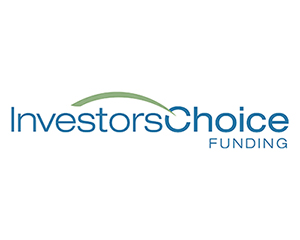Talk to an Expert!
Want to to learn more or see how if applies to your project? Let’s Connect!
Why the 70% Rule in Real Estate Investing Might Not Be Enough
In the world of fix-and-flip real estate investing, the 70% rule is one of the most common tools for quickly evaluating deals. It’s fast, easy to remember, and often recommended for beginners. But in a changing market where costs fluctuate and competition is fierce, relying solely on this rule can be risky.
In this post, we’ll explore what the 70% rule is, how it’s used, and why it might not be enough. You’ll also learn how to structure better offers, use smarter analysis tools, and work with hard money lenders to stay competitive and profitable.
What Is the 70% Rule in Real Estate Investing?
The 70% rule is a formula used by real estate investors to estimate the maximum allowable offer (MAO) for a property they plan to fix and flip.
The formula:
Maximum Offer = (ARV × 70%) – Repair Costs
- ARV = After Repair Value (the projected resale value after renovations)
- 70% = A buffer for all non-repair expenses and profit margin
- Repair costs = Estimated renovation expenses
Example:
If a property’s ARV is $300,000 and you estimate $50,000 in rehab, the calculation would look like:
Max Offer = ($300,000 × 0.70) – $50,000 = $210,000 – $50,000 = $160,000
This formula is designed to give you room for financing costs, holding costs, closing fees, and desired profit.
Why Real Estate Investors Use the 70% Rule
- It’s quick and easy – Great for screening multiple deals quickly.
- It includes a buffer – Leaves room for unexpected costs or market shifts.
- It aligns with hard money lending limits – Many hard money lenders base their maximum loan amount on 65–70% of ARV.
- It’s a helpful rule of thumb – Especially for newer investors or those working in average markets.
Why the 70% Rule Might Not Be Enough
Despite its simplicity and popularity, the 70% rule has limitations. Blindly following it can result in missed deals, overpaid properties, or underestimated costs.
Here’s why it might fall short:
1. It Oversimplifies Your Profit and Costs
The 30% buffer is supposed to cover:
- Holding costs (interest, taxes, insurance)
- Hard money loan interest and fees
- Realtor commissions and closing costs
- Profit margin
But depending on where you invest and how you finance, these numbers can vary significantly. If your total expenses exceed 30%, your deal could end up barely profitable—or even in the red.
2. It Doesn’t Account for Financing Costs
Hard money lenders often charge:
- Interest rates of 8–12%
- Origination points (1–3% upfront)
- Short loan terms (typically 6–12 months)
If your project takes longer than expected or you underestimated your interest payments, your buffer shrinks fast. The 70% rule doesn’t factor in your cost of capital, which is a key part of any fix-and-flip deal.
3. It Ignores Local Market Conditions
What works in one market may not work in another. In hot markets, competition is high, and investors routinely pay 75–80% of ARV just to secure deals. In slower markets, even 70% may be too aggressive due to lower demand or slower sales.
A one-size-fits-all rule doesn’t account for:
- Local appreciation rates
- Buyer demand
- Property turnover speed
- Average renovation timelines
4. It Doesn’t Reflect Rising Construction Costs
Renovation costs have gone up across the board due to:
- Material shortages
- Inflation
- Skilled labor shortages
If you budget $40,000 in repairs and end up spending $55,000, your margin shrinks. The 70% rule doesn’t leave much room for budget overages, especially in volatile markets.
5. It’s Not Ideal for High-End or Unique Properties
Luxury homes or rural properties don’t always follow the same pricing and resale patterns. The 70% rule can be too conservative for high-end homes or too risky for rural homes with less resale certainty.
In these cases, you’ll need to dig deeper and build out a full financial model rather than relying on a basic percentage.
A Better Approach: Data-Driven Analysis
Instead of relying solely on a formula, experienced investors use more detailed strategies to analyze deals and minimize risk.
1. Full Cost Breakdown
Create a spreadsheet that includes:
- Purchase price
- Renovation budget
- Loan interest and points
- Taxes, insurance, utilities
- Closing costs
- Projected selling price
- Net profit
Hard money lenders will often require this type of detailed scope of work before approving funding.
2. Profit-First Planning
Start with the amount of profit you want to make and work backward:
- Target profit: $50,000
- Estimate repairs: $50,000
- Other costs (holding, selling): $30,000
- Subtract from ARV to determine your max purchase price
This method keeps your goals in focus and reduces emotion from the decision-making process.
3. Adjust for Market and Risk
Not all properties carry the same risk. Consider adjusting your target percentage based on:
- Neighborhood comps and turnover speed
- Property condition
- Contractor availability
- Historical performance in similar flips
For higher-risk deals, aim for 65% of ARV or less. For lower-risk, fast-turnaround properties, going up to 75% may make sense—especially if your financing is favorable.
Hard Money Lenders and the 70% Rule
Hard money lenders often base their maximum loan amount on a percentage of the property’s ARV—typically 65–70%. This makes the 70% rule a helpful alignment point for structuring your deal.
However, lenders also consider:
- Your experience as an investor
- Your renovation plan and cost breakdown
- The reliability of your contractor
- The local market outlook
If your numbers don’t align—or your budget is shaky—your loan may be reduced, or the deal may be denied altogether.
What a Hard Money Lender Looks For
- ARV Accuracy – Lenders want realistic comps and a solid resale strategy.
- Detailed Scope of Work – A line-item rehab budget shows professionalism and planning.
- Contractor Bids – Multiple quotes improve cost accuracy.
- Exit Strategy – Be clear about how and when you’ll sell the property.
The stronger your analysis and documentation, the more confidence a lender will have in the deal.
When the 70% Rule Still Works
To be clear—the 70% rule isn’t obsolete. It’s still a helpful guideline when:
- You’re quickly evaluating a large volume of deals
- You’re in an average-cost, average-speed market
- You need a quick rule-of-thumb for wholesaler deals
Just make sure it’s a starting point, not a final decision-maker.
Final Thoughts: Move Beyond the Rule
The 70% rule is useful, but it’s not magic. As you grow as an investor, your deal analysis should evolve too. Market conditions change. Construction costs fluctuate. Interest rates rise and fall. A rigid formula won’t protect you from bad numbers.
Instead, build a detailed financial model for each deal, and work closely with your hard money lender to ensure you’re funding smart and flipping profitably.







